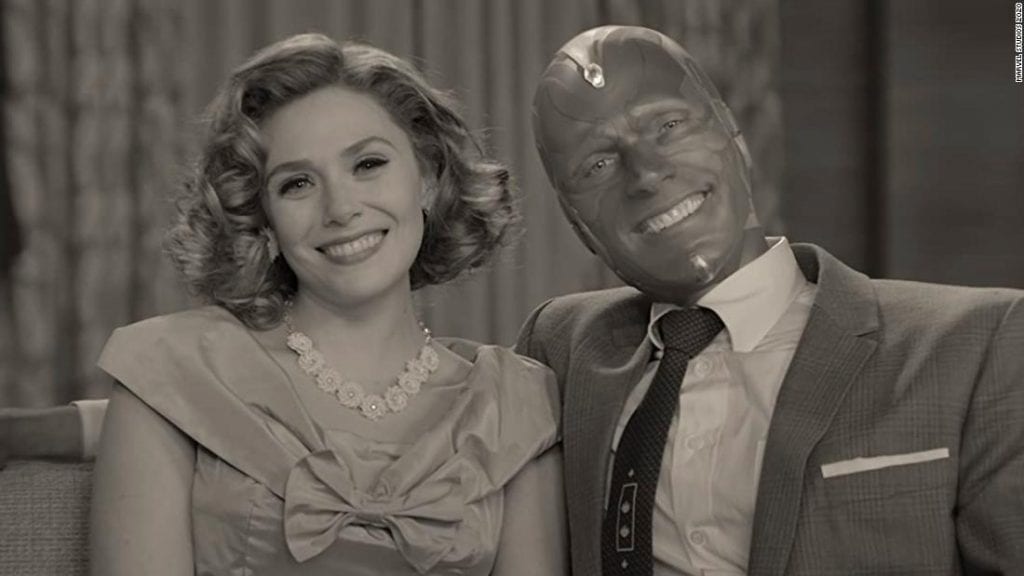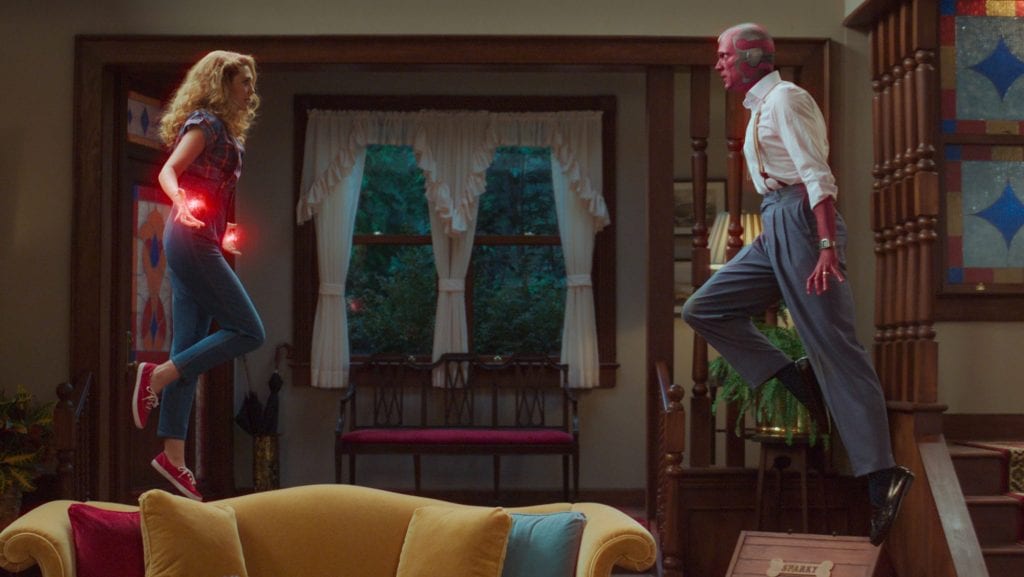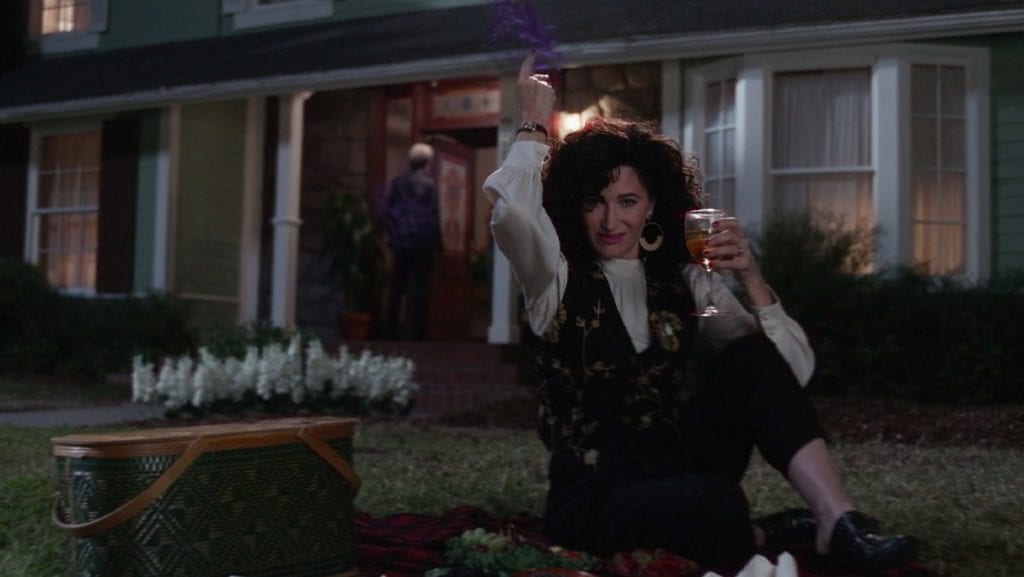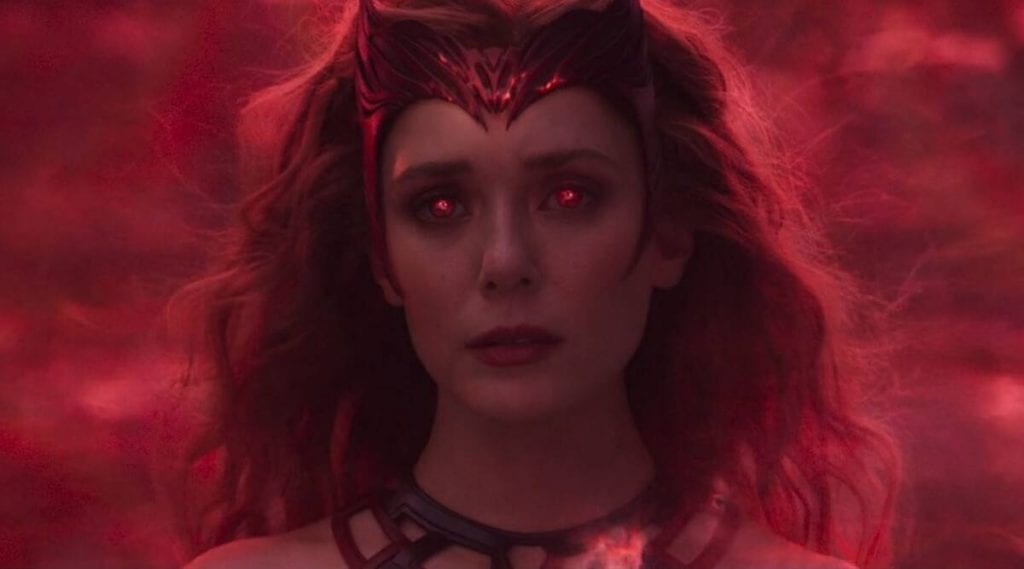

The first major Marvel Studios project to release onto the new mega streaming service Disney+ fulfilled big expectations and then some.
WandaVision always had a lot to live up to, perhaps too much. Not only was the series the first major Marvel Studios project to release onto the new mega streaming service Disney+, it was also the first new entry in the Marvel Cinematic Universe since Spider-Man: Far From Home came out in theaters way back in July of 2019.
Things have certainly changed since then. Pop culture shifts at a rapid pace, and world-shattering events like a global pandemic, massive civil rights movements, and general social unrest tend to speed that process along even more. What audiences want to see right now – even from something as fine-tuned and polished as Disney’s MCU – probably isn’t the same as it was back in the world before.
SPOILERS AHEAD FOR WANDAVISION

But WandaVision proved itself to be something different than the typical superhero formula we had gotten used to, if not simply by design. The series kicks off its first batch of episodes by both spoofing and paying homage to classic sitcoms, going through the decades and touching on everything from I Love Lucy to Malcolm in the Middle to Modern Family. We watch as the literally magical Wanda Maximoff (Elizabeth Olsen) and her android husband Vision (Paul Bettany) live an idyllic suburban life in the town of Westview, surrounded by all too friendly friends and neighbors and eventually, a pair of their own twin boys, Billy and Tommy (Julian Hilliard and Jett Klyne, respectively).
As the family gets into all sorts of trope-filled hijinks, it becomes increasingly clear that something is amiss. Strange and inexplicable happenings occur in Westview; some are funny, but others are deeply unnerving. The town itself, as well as its inhabitants, seem to fade in and out of their own reality, or suddenly begin glitching as if in a simulation.
The truth behind WandaVision is a mystery that slowly reveals itself bit by bit throughout the series’ run, taking full advantage of its old school weekly release schedule to further built the suspense and intrigue. It’s a method that Disney also used for The Mandalorian, putting episodes out once per week as opposed to the way other streaming services usually dump entire seasons at once to encourage binge-watching.

So yes, we’ve pretty much gone full circle back to the way television used to be, but Disney has proved that it works. Episodes of The Mandalorian and WandaVision feel like events, much in the way the theatrical films for both of the series’ overarching franchises are. It keeps people’s interest, not allowing them to move on to the next thing quite as quickly as they could if they were able to go through an entire season in a single day, and most importantly, it gets people talking. As WandaVision’s cheery facade continued to peel back, revealing that the inhabitants of Westview were being held against their will and under the control of Wanda and her abilities, the series brought in characters from other corners of the MCU, like Jimmy Woo (Randall Park) from Ant-Man and the Wasp, Darcy Lewis (Kat Dennings) from Thor, and a now-adult Monica Rambeau (Teyonah Parris) from Captain Marvel to help resolve the crisis.
Online speculation was even more wild than usual, with fans posting theories that ranged from the literal demon Mephisto from the Marvel comics being the true villain behind everything, to rumors that Reed Richards from the Fantastic 4 would appear (and be played by an undoubtedly miscast John Krasinki). Thankfully, WandaVision mostly stuck to its guns in telling a surprisingly moving story about Wanda’s vast well of sadness and grief. Having lost everyone and everything that’s mattered to her throughout the course of the MCU, Wanda sought comfort in the seemingly perfect and happy lives of the sitcom families that she used to watch with her family a lifetime ago. Using her powers, she creates an entirely new reality, one where she can live the life that was taken from her, and even brings her deceased husband back from the dead (so long as he stays within the confines of the town).

But there’s a price to be paid; Wanda’s actions hurt a considerable amount of people, invading their minds and enslaving them to a life of false cheeriness and no free will. It’s not sustainable. Westview – encased in an eerie crimson energy field – quickly attracts the unwanted attention of SWORD, a new government agency that deals with superpowered beings headed by the unscrupulous Director Hayward (Josh Stamberg), as well as an ancient and conniving witch named Agatha Harkness (Kathryn Hahn), who infiltrates Wanda’s carefully constructed mini-universe under the guise of a nosy neighbor.
As things fall apart, Wanda is forced to realize that the only way to protect her family is to let them go. Neither Vision nor Billy and Tommy can exist outside of Wanda’s false reality, but after a fierce battle against Agatha and a new version of Vision constructed by SWORD, Wanda willingly lifts the illusion, bidding farewell to her husband and her children and returning to her true lonesome reality, one that’s even more isolating now that the public further distrusts her and her newfound understanding of her abilities puts her on a level far beyond even some of the strongest characters of the MCU.

Tales of grief – the ways that we process it and how we can make bad decisions and even hurt people on that journey – are always going to have relevance, but like many other works of art, WandaVision resonates all the more strongly in a post-2020 world. The past year saw people throughout the world face sudden loss as the COVID-19 pandemic spread rampantly and claimed the lives of over two and a half million people and counting, with over 500,000 of those deaths coming from the United States alone.
While the series’ final couple episodes may delve too far back into typical superhero action for some, they still show how Marvel can bring big screen spectacle to the small screen. The four characters duking it out in the skies above Westview are among some of the MCU’s most powerful, and the anime-esque action is mightily impressive for a television endeavor, Disney budget or not. Showrunner Matt Shakman (who has directed episodes of Mad Men, Fargo, Game of Thrones, The Boys, The Great, and even It’s Sunny in Philadelphia) wisely reigns things back in for the show’s final moments, putting the focus back on Wanda’s feelings and bringing her rocky journey of acceptance and healing to a bittersweet end.

Many who have watched WandaVision have shared how the show has helped them with their own healing processes. The world and events of the MCU may be fantastical and even cartoonish, but Marvel Studios have always managed to get the most important part right: the characters. Even the most outlandish and bizarre beings (like say, a talking tree or raccoon) of the franchise are imbued with a genuine humanity and relatability that audiences continue to latch onto. Wanda and Vision are two of the more interesting characters from the films, but they’ve always existed as secondary to the main cast of heroes. Elizabeth Olsen and Paul Bettany are wonderful in the roles, and the series finally gives them their proper due.
It’s interesting how audiences have found comfort in watching the series every week, allowing themselves to escape into its world as the real world continues to seemingly fall apart right outside their windows. It’s very much like the way we see a young Wanda – growing up in war torn Sokovia – forgetting the horrors of reality for a short while as she immerses herself in the perfect and entertaining lives of the sitcom families she watches on TV. As the MCU moves on to its next, more familiar-looking chapters with The Falcon and the Winter Soldier and the delayed release of Black Widow, neither one appear to be nearly as unique or unexpected as WandaVision. It’s also unlikely that either will be able to touch people quite as strongly as this series has. The bar has been set.
All episodes of WandaVision are now streaming on Disney+.